|
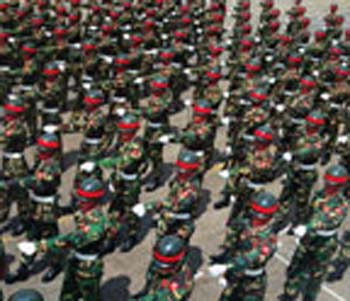
|
Defense |
 |
|
The Bangladesh Army, Navy, and Air Force are composed of regular military members.
Some of the senior officers and noncommissioned officers served in the Pakistan military before the 1971 independence war.
Senior officers include "repatriates" who were interned in Pakistan during the war, and "freedom fighters" who fought against
Pakistan. The 110,000-member, seven-division army is modeled and organized along British lines, similar to other armies on
the Indian subcontinent. However, it has adopted U.S. Army tactical planning procedures, training management techniques, and
noncommissioned officer educational systems. It also is eager to improve its peacekeeping operations capabilities and is working
with the U.S. military in that area. The Bangladesh Air Force is acquiring four U.S. C-130 B transport aircraft. These aircraft
will improve the military's disaster response and peacekeeping capabilities. The Air Force also has recently procured eight
M IG 29 fighters from Russia for $124 million. The Bangladesh Navy is mostly limited to coastal patrolling, but it is paying
to have an ULSAN class frigate built in South Korea. It is supported by artillery, armored, and combat units.
In addition to traditional defense roles, the military has been called on to provide
support to civil authorities for disaster relief and internal security. The Bangladesh Air Force and Navy, with about 7,000
personnel each, perform traditional military missions. A Coast Guard has been recently formed, under the Home Ministry, to
play a stronger role in the area of anti-smuggling, anti-piracy, and protection of offshore resources. Recognition of economic
and fiscal constraints has led to the establishment of several paramilitary and auxiliary forces, including the 40,000-member
Bangladesh Rifles; the Ansars and Village Defense Parties Organization, which claims 64 members in every village in the country;
and a 5,000-member specialized police unit known as the Armed Police. Bangladesh Rifles, under the authority of the Home Ministry
are commanded by army officers who are seconded to the organization.
In addition to in-country military training, some advanced and technical training
is done abroad, including grant aid training in the United States. China, Pakistan, and eastern Europe are is the major defense
suppliers to Bangladesh, but military leaders are trying to find affordable alternatives to Chinese equipment.
In 1995 the Bangladesh Air Force made its largest purchase from the U.S to date--12
T-37 jet trainers. More recently, Bangladesh procured four C-130 transport aircraft. A 2,300-member Bangladesh Army contingent
served with coalition forces during the 1991 Gulf war. Bangladesh is currently the second-leading contributor to UN peacekeeping
operations, with an infantry battalion in UNIKOM (Kuwait), an engineer battalion in UNTAET, (East Timor) and another infantry
battalion scheduled for Sierra Leone in May 2000. |
 |
Sources: U.S. Department of State, March 2000
Bureau of South Asian Affairs | 
|
 |
 |
 |
|
History & Culture of Bangladesh |
 |
|
The area which is now Bangladesh has a rich historical and cultural past, combining
Dravidian, Indo-Aryan, Mongol/Mughul, Arab, Persian, Turkic, and West European cultures. Residents of Bangladesh, about 98%
of whom are ethnic Bengali and speak Bangla, are called Bangladeshis. Urdu-speaking, non-Bengali Muslims of Indian origin,
and various tribal groups, mostly in the Chittagong Hill Tracts, comprise the remainder. Most Bangladeshis (about 88%) are
Muslims, but Hindus constitute a sizable (11%) minority. There also are a small number of Buddhists, Christians, and animists.
English is spoken in urban areas and among the educated.
About 1200 AD, Muslim invaders, under Sufi influence, supplanted existing Hindu and
Buddhist dynasties in Bengal. This incursion led to the conversion to Islam of most of the population in the eastern areas
of Bengal, and created a sizable Muslim minority in the western areas of Bengal. Since then, Islam has played a crucial role
in the region's history and politics.
Bengal was absorbed into the Mughul Empire in the 16th century, and Dhaka, the seat
of a nawab (the representative of the emperor), gained some importance as a provincial center. But it remained remote and
thus a difficult to govern region--especially the section east of the Brahmaputra River--outside the mainstream of Mughul
politics. Portuguese traders and missionaries were the first Europeans to reach Bengal in the latter part of the 15th century.
They were followed by representatives of the Dutch, the French, and the British East India Companies. By the end of the 17th
century, the British presence on the Indian subcontinent was centered in Calcutta. During the 18th and 19th centuries, the
British gradually extended their commercial contacts and administrative control beyond Calcutta to Bengal. In 1859, the British
Crown replaced the East India Company, extending British dominion from Bengal, which became a region of India, in the east
to the Indus River in the west.
The rise of nationalism throughout British-controlled India in the late 19th century
resulted in mounting animosity between the Hindu and Muslim communities. In 1885, the All-India National Congress was founded
with Indian and British membership. Muslims seeking an organization of their own founded the All-India Muslim League in 1906.
Although both the League and the Congress supported the goal of Indian self-government within the British Empire, the two
parties were unable to agree on a way to ensure the protection of Muslim political, social, and economic rights. The subsequent
history of the nationalist movement was characterized by periods of Hindu-Muslim cooperation, as well as by communal antagonism.
The idea of a separate Muslim state gained increasing popularity among Indian Muslims after 1936, when the Muslim League suffered
a decisive defeat in the first elections under India's 1935 constitution. In 1940, the Muslim League called for an independent
state in regions where Muslims were in the majority. Campaigning on that platform in provincial elections in 1946, the League
won the majority of the Muslim seats contested in Bengal. Widespread communal violence followed, especially in Calcutta.
When British India was partitioned and the independent dominions of India and Pakistan
were created in 1947, the region of Bengal was divided along religious lines. The predominantly Muslim eastern half was designated
East Pakistan--and made part of the newly independent Pakistan--while the predominantly Hindu western part became the Indian
state of West Bengal. Pakistan's history from 1947 to 1971 was marked by political instability and economic difficulties.
Dominion status was rejected in 1956 in favor of an "Islamic republic within the Commonwealth." Attempts at civilian political
rule failed, and the government imposed martial law between 1958 and 1962, and again between 1969 and 1972.
Almost from the advent of independent Pakistan in 1947, frictions developed between
East and West Pakistan, which were separated by more than 1,000 miles of Indian territory. East Pakistanis felt exploited
by the West Pakistan-dominated central government. Linguistic, cultural, and ethnic differences also contributed to the estrangement
of East from West Pakistan. Bengalis strongly resisted attempts to impose Urdu as the sole official language of Pakistan.
Responding to these grievances, Sheikh Mujibur Rahman--known widely as "Mujib"--in 1949 formed the Awami League (AL), a party
designed mainly to promote Bengali interests. Mujib became president of the Awami League and emerged as leader of the Bengali
autonomy movement. In 1966, he was arrested for his political activities.
After the Awami League won all the East Pakistan seats of the Pakistan national assembly
in 1970-71 elections, West Pakistan opened talks with the East on constitutional questions about the division of power between
the central government and the provinces, as well as the formation of a national government headed by the Awami League. The
talks proved unsuccessful, however, and on March 1, 1971, Pakistani President Yahya Khan indefinitely postponed the pending
national assembly session, precipitating massive civil disobedience in East Pakistan. Mujib was arrested again; his party
was banned, and most of his aides fled to India, where they organized a provisional government. On March 26, 1971, following
a bloody crackdown by the Pakistan army, Bengali nationalists declared an independent People's Republic of Bangladesh. As
fighting grew between the army and the Bengali mukti bahini ("freedom fighters"), an estimated 10 million Bengalis, mainly
Hindus, sought refuge in the Indian states of Assam and West Bengal.
The crisis in East Pakistan produced new strains in Pakistan's troubled relations
with India. The two nations had fought a war in 1965, mainly in the west, but the refugee pressure in India in the fall of
1971 produced new tensions in the east. Indian sympathies lay with East Pakistan, and in November, India intervened on the
side of the Bangladeshis. On December 16, 1971, Pakistani forces surrendered, and Bangladesh--meaning "Bengal nation"--was
born; the new country became a parliamentary democracy under a 1972 constitution. |
 |
Sources: U.S. Department of State, March 2000
Bureau
of South Asian Affairs |
 |
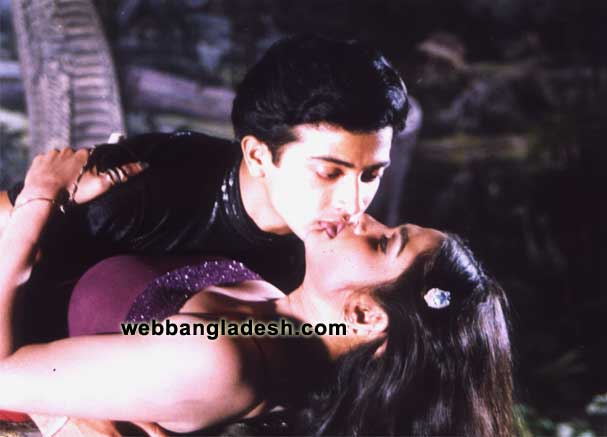
|
| A Bangladeshi Movie Scene, The Diverse Population |
|
 |
 |
 |
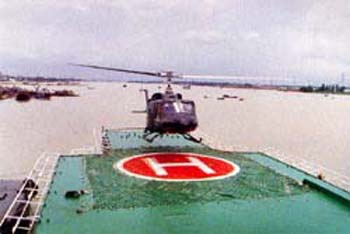
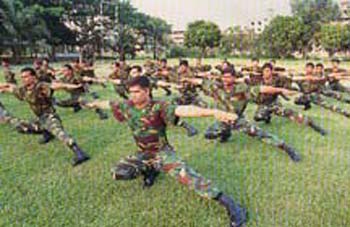
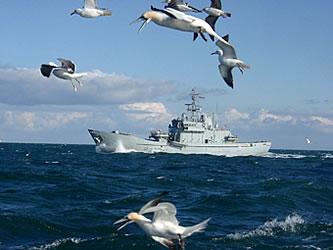

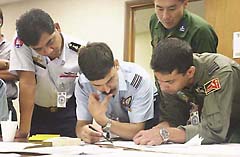
|
 |
 |
 |
|

